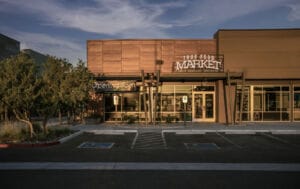The strong economy and business climate in Arizona continues to attract new residents and workers from across the country, despite record-breaking heat this summer.
LEARN MORE: 7 Metro Phoenix cities among Top 100 places where retirees are moving in 2023
According to a recent study, Arizona saw the fourth-largest net migration of high-earning households across the country, ranked behind only Florida, Texas, and North Carolina. The net gain in these households for Arizona was 4,563, which could have a significant impact on a state’s tax revenue and finances.
Meanwhile, states like New York and Illinois saw a net loss of more than 10,000 high-earning households, and California ranked last with a net loss of almost 30,000. The study also noted that Arizona’s low-tax environment had made it an attractive destination for new residents.
This newest report comes during a year where population growth has dominated Arizona’s headlines. Back in March, the United Census Bureau found that Maricopa County gained more residents last year than any other county in the country, adding 56,831 residents for a growth rate of 1.3%.
Suburban growth has been a key part of this process. Cities such as Queen Creek and Maricopa have seen some of the largest growth, growing by over 6% last year.
The city of Coolidge, which recently saw the approval of an expansion of its SRP Generating Station, saw the biggest jump in population of almost 12%, thanks in part to new advanced manufacturing jobs.
The Coolidge generating station expansion will help support the growth of incoming residents and job creators and their energy demands. During this summer’s record heat, utility companies like APS and SRP have continued to deliver reliable service, even as the Phoenix metro area population surpassed 5 million this year.
The state’s energy resources remain strong as new residents move in. According to the U.S. Energy Information Administration, Arizona ranks second in the country for solar energy potential.
Arizona’s ability to provide for rising energy demands have also been strengthened by a new battery manufacturing complex announced earlier this year by LG Energy Solutions.
The number of new Arizona residents and the growing population has also seen other industries expand.
Glenn Farley, research director at Common Sense Institute Arizona, said that Arizona’s health care sector, which represents 10-20% of the state’s economy, is forecasted to grow by 3% per year.Despite stubbornly high inflation nationally, the cost of living in the Phoenix metro area also remains much lower than other metro areas in the country like Chicago, New York, and St. Louis, which also helps to attract new residents.




